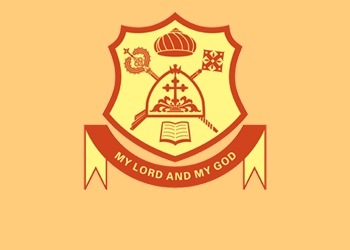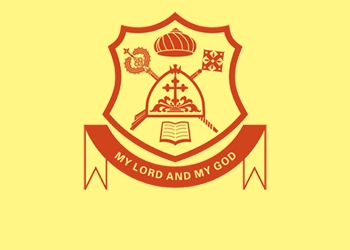HomeChurch and DioceseMalankara Orthodox Syrian ChurchAdministration
Administration
The Church has its central headquarters at the Devalokam Aramana (Catholicate Palace ) at Kottayam, Kerala in India. The supreme head of the Indian Orthodox church is H.H. Moran Mar Baselius Mar Thoma Paulos II. The Church is ruled and governed by the Church Constitution of 1934. True to the Orthodox Christian tradition, the Indian Orthodox Church employs an administrative system which is a perfect blend of episcopacy and democracy.
The Church is divided into 30 dioceses with a Metropolitan (bishop) heading each diocese. The Malankara Syrian Association is the parliament of the Church which is a body of bishops and elected laity and clergy representatives from all the parishes. This Association meets on special occasions to take important decisions pertaining to the entire church.
The Association also elects a Managing Committee for carrying out administrative activities on behalf of the Association. The number of laity members of this committee is double that of the clergy, which indicates the participative nature of laity in church matters. The Episcopal Synod comprising of all the Bishops of the church is the authority regarding Faith, Order and Discipline. The Synod is also responsible to install the Catholicos designated by the Association.
CONSTITUTION
The church had no written constitution until 1934, but was governed by consensus, traditions and precedence. It was the vision of Vattasseril Geevarghese Mar Dionysius VI to have a clearly defined uniform constitution to govern the church administration. Thus action was initiated in this regard and a sub-committee was appointed to submit a draft constitution. The draft presented at the Malankara Association meeting of Dec 26, 1934, held at M. D. Seminary, Kottayam was adopted and brought to force. The constitution has hence been amended thrice to meet the situations and needs. This only proves that the church is alive to meet the challenges that arise from time to time. When the Patriarch party challenged the validity of the constitution, the Supreme Court ruled its final verdict declaring the Constitution as valid and standing. Every member of the Church is bound by the rules and regulations laid down in the Constitution.
The Constitution upholds the autonomy and autocephaly of the Malankara Orthodox Church. It is Episcopal in its polity and not congregational. At the same time it upholds democratic principle by safeguarding the rights and privileges of the lay people. It was framed at a time when the Patriarch of Antioch was held in high esteem and hence his limited role is included.
The constitution enshrines the fundamental features of the Church, provides direction for its internal administration and preserves its integrity and autonomy. The essential features of the Church are provided in the preamble. The first article emphasizes the bond of relationship between the Church of Syria and Malankara. The second article deals with the foundation of the Malankara Church by St. Thomas and the primacy of the Catholicos. The third article refers to the name of the church and the fourth about the faith, traditions etc., and the fifth about the canons governing the administration of the Church. The whole constitution conceives the Malankara Church as self –sufficient in all her requirements, be it temporal, ecclesiastical or spiritual in nature and upholds that the Malankara Orthodox church is rightly autocephalous in character.
CANON LAW
The Canon Law accepted and followed by the Orthodox Church of Malankara was collected and codified by Mar Gregorios Bar Hebraeus, Catholicos of Edessa (AD. 1226-1286) in the thirteenth century. He was a versatile genius and a great scholar in church History and Canon Law of the Church. Having carefully and judiciously scrutinized the verdicts of the Church Fathers and the decrees of the provincial and ecumenical councils he collected them, edited and classified under different heads. The original work in Syriac contains forty chapters and is called by the name ‘Hoodoyo Canon’. The word ‘hoodoyo’ means “explanations”.
The original syriac manuscript was edited and printed in Paris in 1898 by Paul Bedjan. The Pampakuda Konat Library possesses a copy of this ancient canon which in every detail agrees with the Paris publication. The original Syriac canon contains forty chapters of which the first ten chapters have been translated into Malayalam by the late lamented Malpan Fr. Abraham Konat. The ten chapters contain matters related to church politics, sacraments, feasts and fasts, burial rites etc. In his editorial note it is mentioned that the remaining thirty chapters contain subjects that are irrelevant for the Malankara Church, but connected with the Middle East society of that period.
HOLY EPISCOPAL SYNOD
The Episcopal Synod with the Catholicos as its president is the apex body of all bishops. The authority of the synod is final and binding. It has exclusive rights and privileges in the matter of upholding the faith of the church, its discipline and order of Apostolic Succession. The bishops rule the diocese assigned to them by the synod.
MALANKARA SYRIAN CHRISTIAN ASSOCIATION
As regards temporal matters the church is guided by the Malankara Syrian Christian Association.
The Mulanthuruthy Synod summoned by the Patriarch Peter III in AD 1876 resolved to have an elected body called the Malankara Syria Christian Association to manage and control all the religious and social concerns of the Malankara church. The constitution has clearly defined the composition and representation of the Association. Article 71 mentions: a priest and two laymen elected by each parish general body and the members of the existing managing committee shall be members of the Association. This was later amended in time with Supreme Court directive. Now the representation of the lay people is based on the number of parishioners.
The Malankara Metropolitan is the president and the bishops having administrative charge of Diocese shall be vice-presidents of the Association. The Association is the body that elects the members of the managing committee, bishops and the Catholicos and Malankara Metropolitan.
OTHER ADMINISTRATIVE BODIES
The various other administrative bodies within the Malankara Church are the Managing Committee, the Working Committee. The Managing Committee is a smaller body to look into financial and other administrative matters. The Working Committee is a small body of members nominated by the Malankara Metropolitan. This body prepares the agenda for the Managing Committee and helps the Malankara Metropolitan in his administrative functions. The same body is also known as the Advisory Council. The members of the Working Committee are also members of the Managing Committee.


